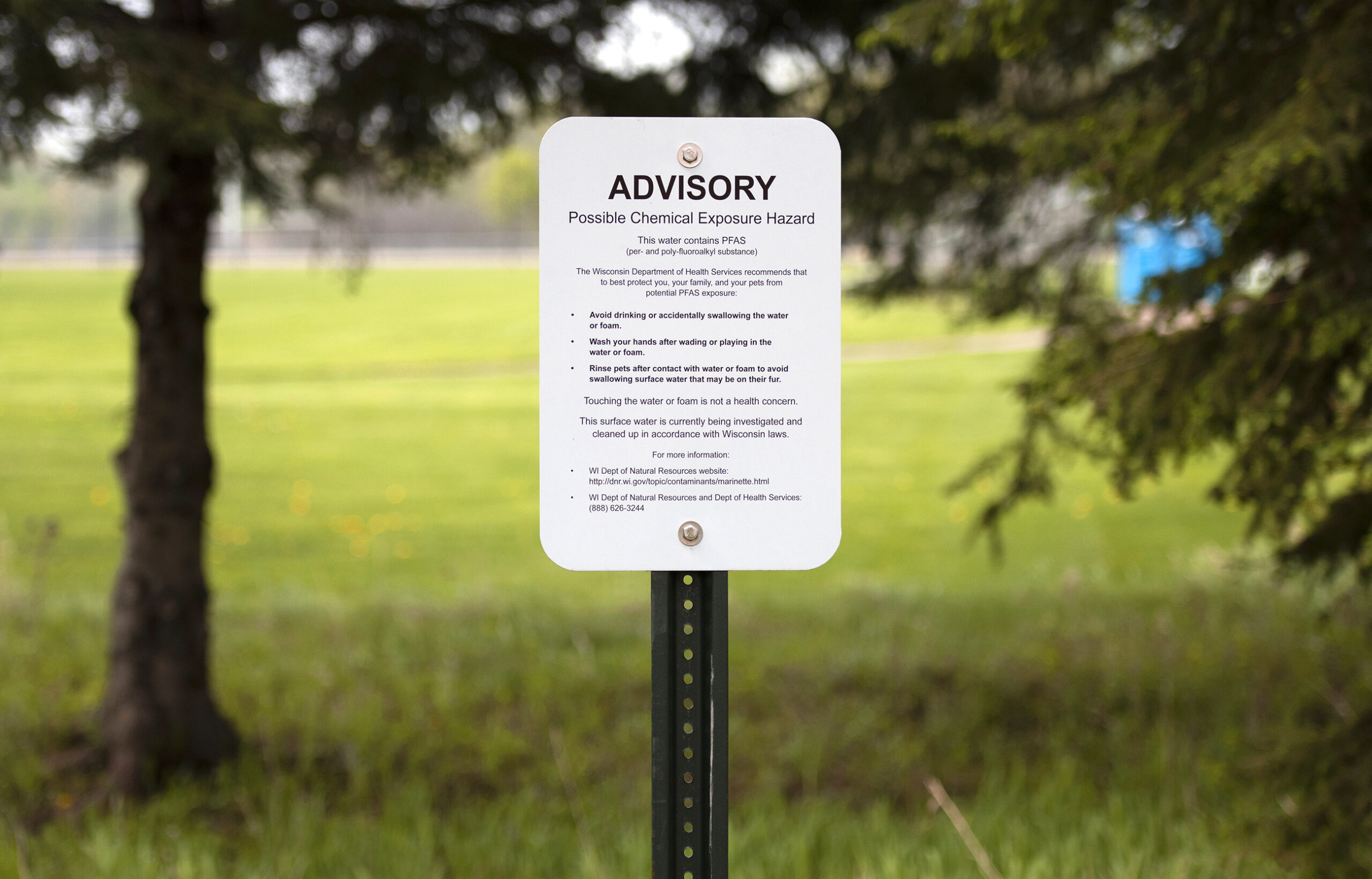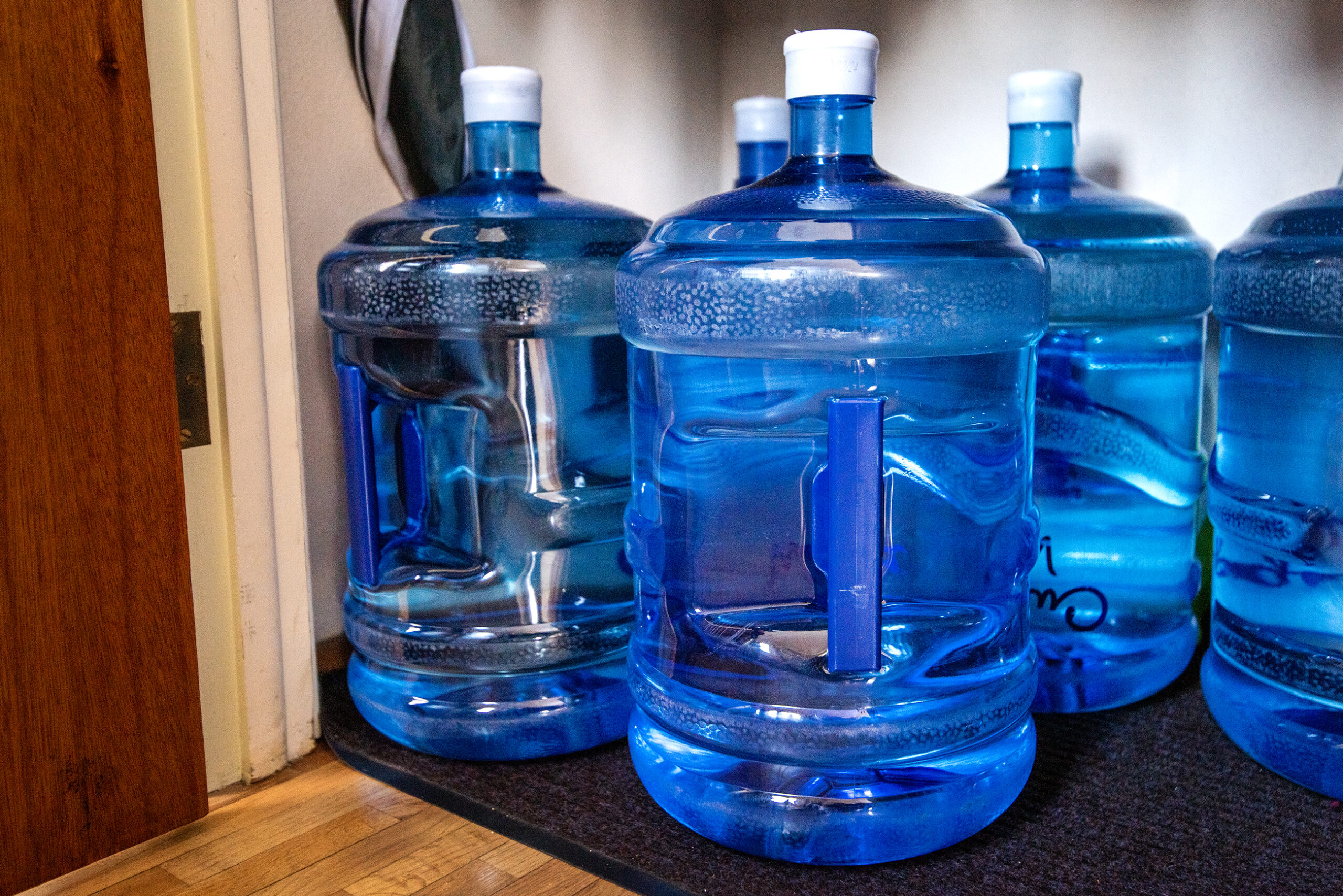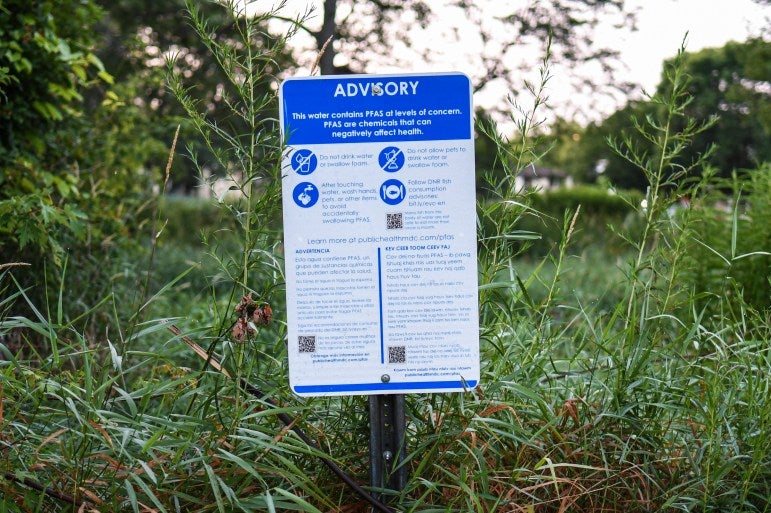After heated debate, the policy-setting board for the Wisconsin Department of Natural Resources has signed off on the state regulation of so-called harmful forever chemicals in drinking water, although at a less protective standard than the agency proposed.
The Natural Resources Board voted 6-1 to approve a drinking water standard of 70 parts per trillion for two of the most widely studied PFAS chemicals: PFOA and PFOS. Marcy West was the lone dissenting vote in favor of the DNR’s more restrictive standard. The agency proposed a threshold of 20 parts per trillion as recommended by the Wisconsin Department of Health Services.
The regulation approved by the board is in line with the health advisory level of 70 parts per trillion issued by the Environmental Protection Agency in 2016.
News with a little more humanity
WPR’s “Wisconsin Today” newsletter keeps you connected to the state you love without feeling overwhelmed. No paywall. No agenda. No corporate filter.
The chemicals have raised concern among residents because they don’t break down easily in the environment.
Multiple studies of people living and working in areas with high PFOA levels have shown links to serious health effects that include increased risk of kidney and testicular cancers, thyroid disease and fertility issues. The chemicals have also been tied to reduced response to vaccines.
Debate over the appropriate level of regulation for the chemicals drew heated exchanges at times among board members and DNR Secretary Preston Cole.
Board members Terry Hilgenberg and Bill Bruins, current board chair Greg Kazmierski and former chair Dr. Fred Prehn questioned the 20 parts per trillion standard recommended by health officials and the DNR’s analysis of costs tied to complying with the proposed regulations.
Prehn said he felt 70 parts per trillion is a good compromise that would allow the agency to move forward with testing of public water supplies for the chemicals.
“It’s a good starting point. It’s based on science — the Obama EPA,” Prehn said.
Hilgenberg said he felt more comfortable with a standard in line with the EPA’s health advisory level, citing mistrust of state health officials based on their response to the COVID-19 pandemic.
“When you come to the ‘People’s Republic of Madison,’ I have to wear a mask, and it’s ridiculous. … I don’t have the trust with DHS,” Hilgenberg said.
Bruins said the cost of implementing the agency’s proposed standard would be “astronomical.” Kazmierski said the DNR’s economic review may be incomplete due to the small number of systems that have been tested to date.
Board members Bill Smith and Sharon Adams voted for the regulation, but they qualified their votes by saying they don’t believe the threshold goes far enough to protect public health.
“I don’t believe it’s aspirational in any way, but I also recognize there will be some benefit to getting a rule passed today to initiate some of the sampling and the data collection,” Smith said.
Adams added the weakened standard doesn’t seem to be a “leadership position” that will benefit communities.
The EPA announced late last year that recent data indicates negative health effects “may occur at much lower levels” of exposure to the chemicals than previously known.
Scott Manley, executive vice president of government relations for Wisconsin Manufacturers and Commerce, told the board Wednesday the state’s largest business lobby would support a less restrictive standard in drinking water.
“I think you have the authority to set the standard at 70 parts per trillion,” Manley said. “I don’t believe that the DHS and department staff have met the burden to deviate from that standard.”
Manley questioned the science that health officials used to arrive at their recommendation. He said the EPA reviewed the same data when the federal agency issued a health advisory level of 70 parts per trillion. However, Dr. Sarah Yang, a DHS groundwater toxicologist, told the board that state health officials based their recommendation on more recent research from 2019 that was released after the EPA developed its advisory.
Manley also accused the DNR of underestimating costs tied to complying with the agency’s proposed standard in order to evade a law requiring legislative approval of regulations that exceed $10 million in any two-year period. He claimed the costs related to compliance would run in the tens of millions of dollars each year.
The DNR’s proposed groundwater standard of 20 parts per trillion failed after a 3-3 vote with Hilgenberg abstaining.
Even so, the board approved the agency’s surface water standard of 8 parts per trillion for PFOS in all waters with limited exceptions. The DNR said that level aims to protect the public from chemicals ingested through fish consumption. For PFOA, the DNR is recommending a standard of 20 part per trillion in waters deemed public water supplies and 95 parts per trillion for all other surface waters.
Wisconsin environmental groups, community leaders and residents affected by PFAS had pleaded with the board to adopt the DNR’s proposed standards as communities like Peshtigo, French Island, Eau Claire, Madison and most recently Wausau are facing contamination from the chemicals in public and private wells.
“The Natural Resource Board’s action today to approve surface water and modified drinking water standards is an incomplete but important step down the long road we must all walk together to fix this mess,” said Scott Laesar, water program director for Clean Wisconsin in a statement. “But by voting down groundwater standards, the board failed to protect the tens of thousands of Wisconsin rural families who draw their water from private wells. The drinking water rule passed by the NRB today will only apply to municipal water systems.”
Community leaders for the towns of Campbell, Marinette and Peshtigo pleaded with the board to pass the DNR’s standards, saying their residents had been unknowingly drinking polluted water for years.
Town of Peshtigo Chair Cindy Boyle became emotional as she urged the board to protect state residents, saying PFAS levels in her blood are five times the national average.
“I’m not embarrassed. I’m exhausted. I’m pissed off. I’m scared, but I am relentless,” Boyle said. “I will not stop. Our community needs and deserves protection.”
She expressed fears her community would not be able to hold Tyco Fire Products accountable without a standard for cleaning up PFAS pollution stemming from its fire training facility in Marinette. Residents there reached a $17.5 million settlement with the firefighting foam manufacturer related to pollution from its facility last year.
Wausau Mayor Katie Rosenberg told the board mothers are calling her office asking if their infants will die if they drink the water after testing has found PFAS in all the city’s wells.
“The public trust is shattered. People are confused by dueling advisories, and municipalities can’t shoulder the burden of doing the right thing by ourselves,” said Rosenberg.
Rosenberg’s comments drew heated remarks from Prehn, who accused the city’s mayor of inciting hysteria among residents.
“That’s irresponsible because the bottom line is it’s a forever chemical, and you’re never going to remove all of it,” Prehn said.
Prehn said nobody disputes that PFAS is dangerous, saying officials disagree on what level is acceptable for public health. Rosenberg rejected Prehn’s claims, saying she told residents not to panic.
As of last fall, the DNR said regulators were addressing PFAS pollution at more than 50 sites within 25 communities.
The standards still require approval from the Republican-controlled Legislature. GOP legislators have previously weakened PFAS regulations and stripped most of Gov. Tony Evers’ funding proposals to address PFAS from the budget.
Wisconsin Public Radio, © Copyright 2025, Board of Regents of the University of Wisconsin System and Wisconsin Educational Communications Board.







